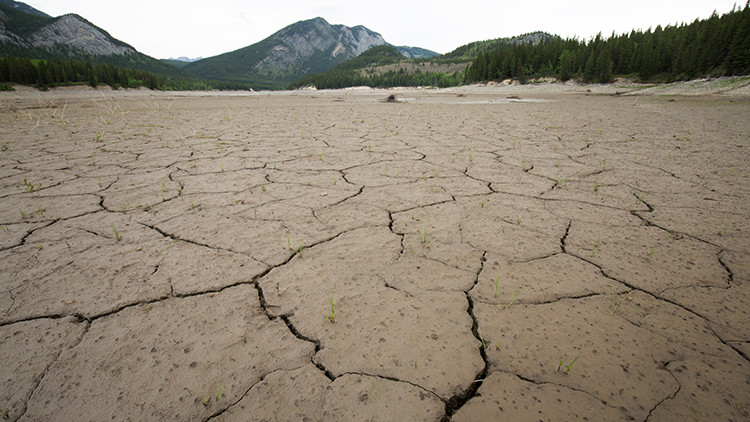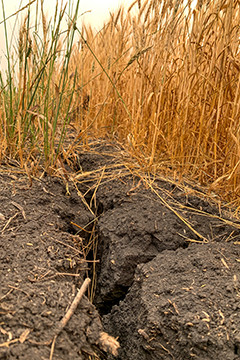Government mail service may be affected by the Canada Post labour disruption. Learn about how critical government mail will be handled.
Drought basics

Generally, Alberta relies on melting snow and precipitation for most of its water. Droughts are prolonged periods of dry weather that deplete water resources, including:
- natural sources (rivers, streams, lakes, wetlands, groundwater)
- constructed storage (reservoirs and dugouts)
- irrigation canals
- soil moisture
Types of drought
Drought can further be defined based on its impacts, including:
Impacts of drought
Many Albertans believe this province has an abundant supply of freshwater, but in some areas, such as southern Alberta, water scarcity is already a reality. Impacts from drought include:

- degradation or death of vegetation, fish and wildlife
- economic losses in agriculture and associated industries
- water restrictions, shut down of some licensed water diversions where water demands exceed water supply
- increased forest fire risk
Multi-year droughts are critical to understand and prepare for because their impacts on the environment, economy and society are cumulative. Because we do not know in advance whether a drought will become a multi-year event, the potential for prolonged droughts requires greater preparedness and resiliency.
To learn more about how the Government manages drought, visit the “What Government is doing page.
Water management
Alberta’s government ensures the quality and quantity of Alberta’s water resources under the Water Act, which supports and promotes the conservation and management of water. During times of drought or water shortage, the government will work with license holders to help find solutions.
The government's response actions in a specific river basin will be based on the length and severity of drought in that area, as outlined in Alberta's Drought Response Plan.
For more about the Drought Response Plan, see:
Related
Contact
Connect with Environment and Protected Areas’ Outreach Services:
Hours: 8:15 am to 4:30 pm (open Monday to Friday, closed statutory holidays)
Toll free: 310-3773 (in Alberta)
Email: [email protected]